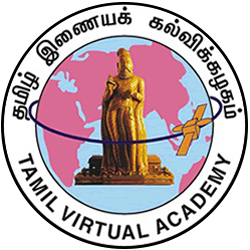Primary tabs
-
P10421 LESSON - 1
Chulamani
This lesson gives a brief introduction to the five great epics as well as the five minor epics as two different genres of Tamil literature. It also deals with one of the minor epics, Chulamani. The origin of its name, its author, and structure of its story are presented. The reason for its inclusion in the five minor epics is also explained.
The six central units deal with an introduction to Chulamani, the outline of its story, its characters, its literary greatness, its comparison with journalism and its religious principles besides a reference to good and bad omens.
Written by Tholamozhi Devar in 925-950 B.C.
The author has followed Tamil literary tradition and has created this epic with great literary, wealth. The first 50 poems of Chulamani compare well with Jeevagacinthamani in terms of words, poetic lines and ideas. The words from Thirukural are also used in different places of this work. Human life, description of Nature, poetic devices. Structure and the style adopted from Sanskrit works are the literary features of Chulamani.
Chulamani foresees modern journalism. Chulamani has the description of palm leaf journal called Olaichuvadi,
The two vital aspects of the religious principle and the tradition of good and bad omens form the basis for this literary creation.
This lesson, will help you to understand the beliefs and faiths of the ancient Tamil, the principles of Samana religion, good and bad omens, higher and lower levels of people and the fourfold themes of Aram, Porul, Inbam and Veedu. You are given a glimpse into the structure of the five minor epic. Chulamani.



